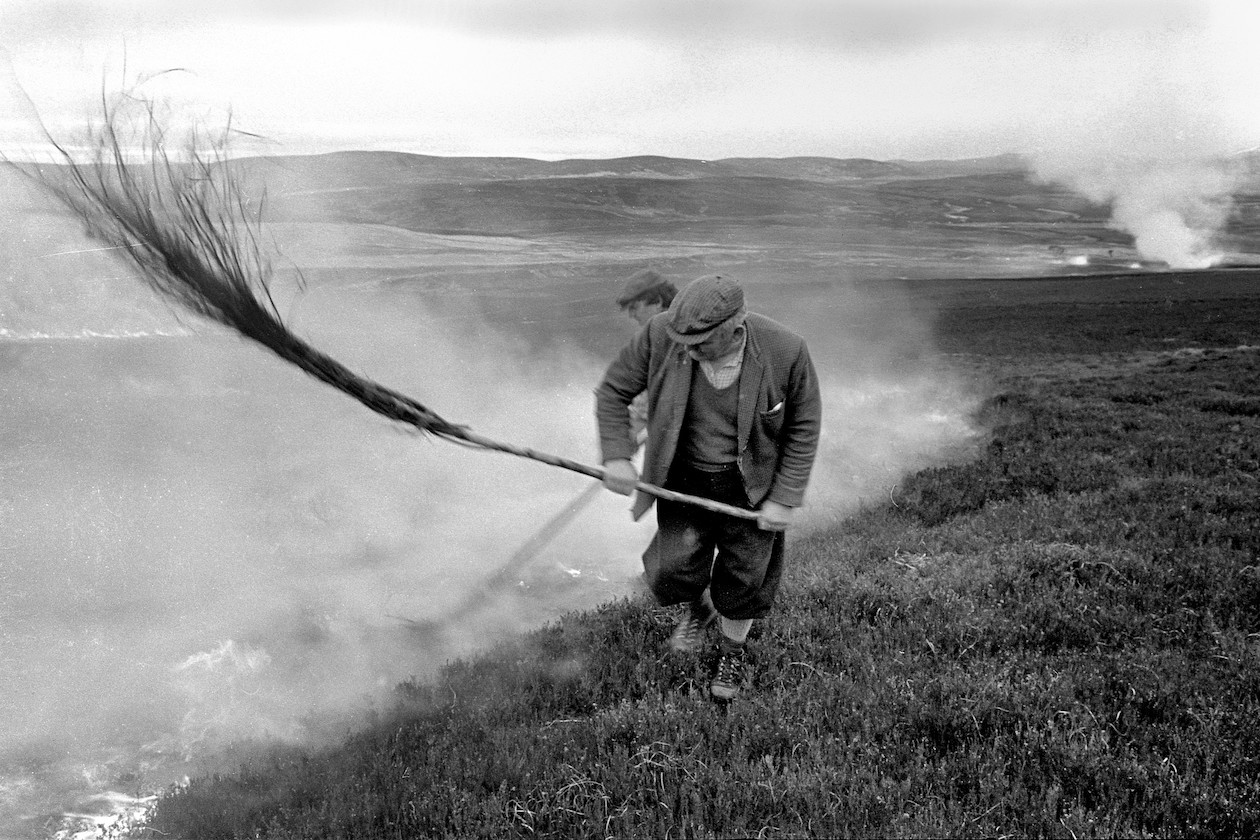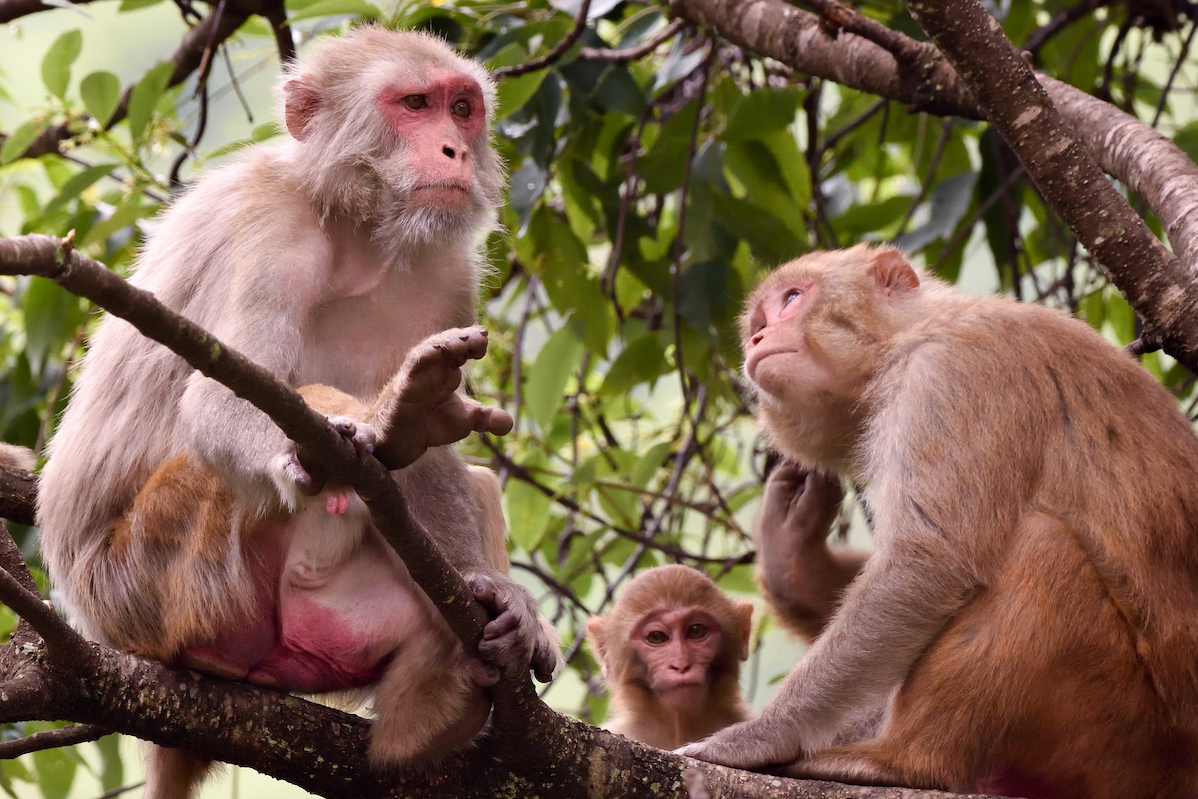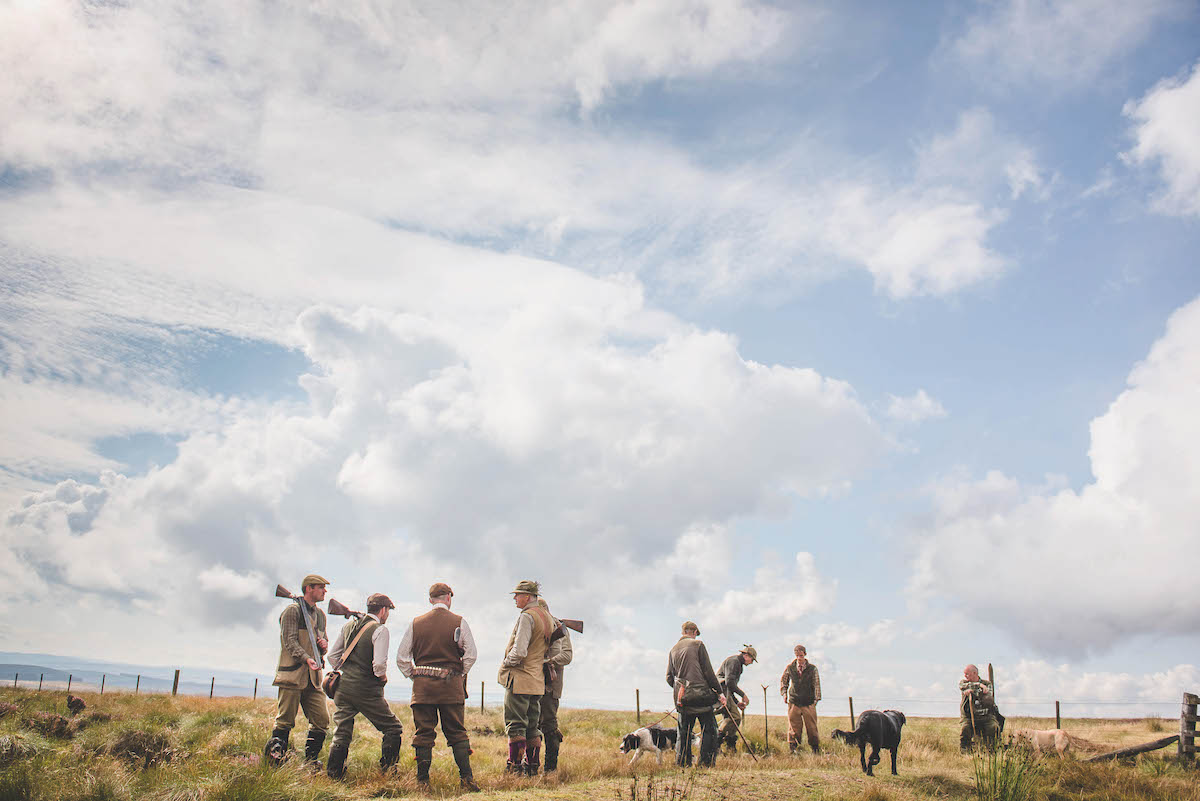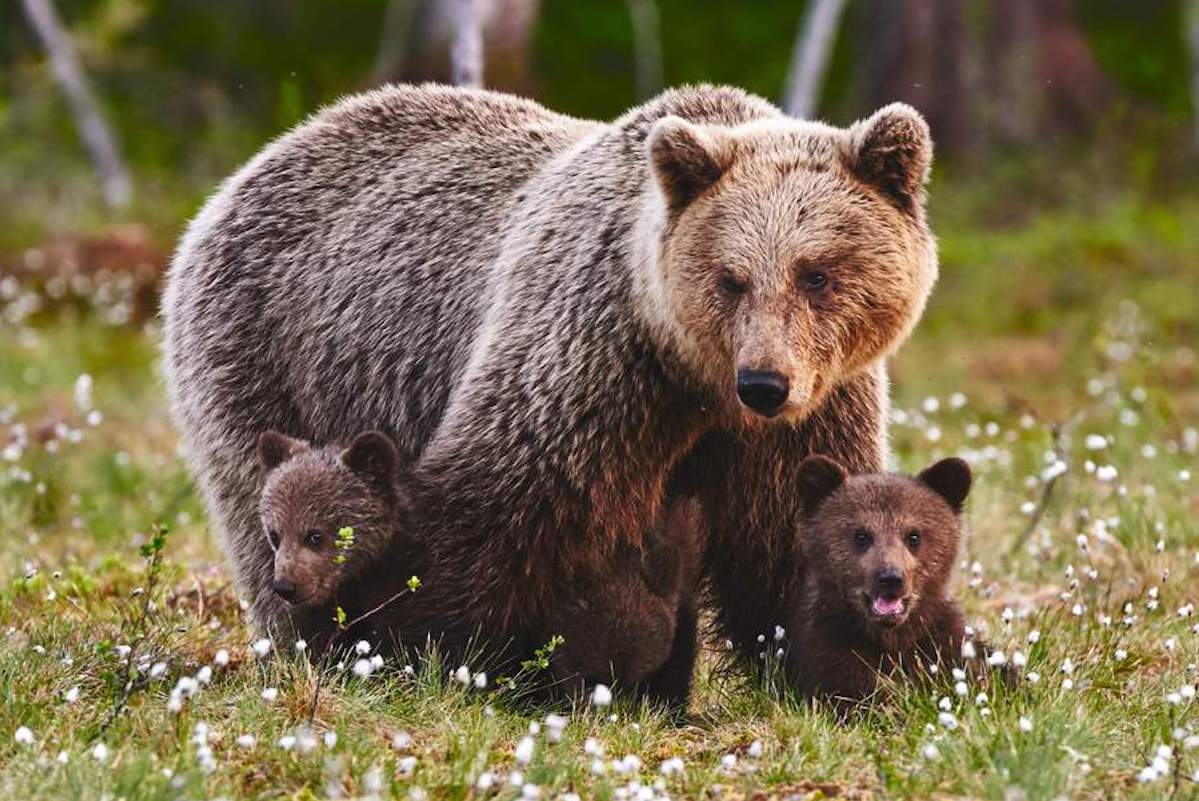How grouse moor management has changed over the years
Ronnie Kippen is a retired gamekeeper who served over 50 years on moorlands. Forty-one of these as keeper and then head keeper on an estate in Glen Quaich, Perthshire. Ronnie has witnessed considerable change over his time out working on the Scottish moors. Here he reflects on the increasing professionalism of the job and the intense interest there is today in land use, access and conservation.

Using a birch broom in the 1970s
Land management has been carried out for centuries, producing upland landscapes that offer rich biodiversity and favourable habitats for an abundance of wildlife. My knowledge has increased somewhat over time and all the keepers working the moors today have a far greater skill set of how to conserve the environment than we all did 50 or so years ago.
On grouse moors, we manage the heather moorland for red grouse and this also creates a rich biodiversity supporting a variety of plants and vegetation, as well as many wader species. Curlew, oystercatcher and peewit are seen on a regular basis. Grouse moors are also home to many species of birds of prey and we see many buzzards, kestrel, red kite, merlin and golden eagles on our working day out on the moors. This is thanks to the work of gamekeepers.
The role of the gamekeeper in grouse moor management
Apart from the obvious part of the job of managing moorland for grouse shooting, gamekeepers look after wildlife and do a lot of good environmental work. We have all witnessed big change over the past 25 – 50 years as management practices have progressed. There’s been a huge improvement in the equipment used and we have developed best practice techniques over time.
Being a gamekeeper is a calling and you have to have a love of the countryside or quite often, as in my case, have a strong family connection to the moors. Many estates used to have family generations of gamekeepers employed where training was on the job and usually performed by the head keeper, but nowadays a lot of the young gamekeepers are coming through college with a combination of classroom-based learning and hands-on experience to gain the best skill set. It’s a win win all round.
I have noticed that there are far fewer keepers now than there used to be 25 years ago. Some traditional sporting estates have diversified into tourism or host events on site, be it food or music festivals or even weddings. Many lowland estates have also been transferred over to farming enterprises so the need for gamekeepers has reduced quite a bit.

All terrain vehicles fitted with water pumps for controlled burns are also used to fight wildfires
Muirburn
Muirburn (controlled burning) is a very important practice in grouse moor management as it allows gamekeepers to look after the heather which provides food and shelter for all moorland birds including grouse. It regenerates plants and locks up carbon. It is also a vital tactic to prevent wildfires which can destroy precious moorland habitats and cause vast carbon emissions.
Gamekeepers have the expertise and know the lay of the land inside out on their estate. For example where ridges occur that help as natural boundaries, so it’s virtually impossible for muirburn to get out of control on moorland unless there is a machinery break down. Gamekeepers have a great relationship with the Scottish Fire & Rescue Service and when a wildfire occurs firemen find it very useful to tap into the knowledge of the ground that gamekeepers have.
The practice of muirburn has been established for generations and it’s still done in the traditional manner of rotational strip burning. However, nowadays serious equipment is used when doing muirburn. We used to use simple birch besoms, basically a witch’s broomstick, to stop the fire spreading out sideways whilst controlling the burn in strips. We stopped using witch’s broomsticks around 20-25 years ago when new high-tech equipment was brought in including fogging units, leaf blowers and swipes which are attached to four-wheel drive tractors to cut fire breaks. This equipment really is second to none.
I first started carrying out muirburn in the 1970s and the environmental benefits are clear. The sphagnum moss benefits from rotational heather burning and so do mountain hares and waders. In Glen Quaich, Perthshire where I keepered, curlew, golden plover, snipe and peewit fared particularly well. Managed grouse moors are by far the best habitat for these birds because of the young heather, which is where they make their nests.
Heather burning is now regulated in line with the Muirburn Code, which I was heavily involved in through the muirburn steering group, and the Scottish Fire & Rescue Service has also endorsed it as an important land management tool to reduce fuel load and avoid wild blazes getting out of control.
Thanks to recent science, muirburn is far better understood in terms of its vital role in supporting biodiversity, protecting against wild fires and it can be carbon neutral. It’s a traditional practice that has evolved considerably over the years that I’ve been carrying it out and it will very much remain an essential land management tool.

Ronnie Kippen
Peatland restoration
In the middle years of the last century, some peat bogs were drained with public money in the push for greater agricultural production, which however resulted in degraded peatland. Now after many years of research and better knowledge of the land, we are implementing projects to rewet the peatlands and allow for more carbon to be stored. Many peatland restoration projects are being carried out on Scottish estates to put right the wrong that was done many years ago. This will enable carbon sequestration, habitat improvement and restoration of severely eroded areas of the Scottish uplands. Gamekeepers are installing wooden dams to slow up water flows, blocking old ditches and reshaping areas of land that had been eroded. No two days are the same for a keeper out on the moors.
Biodiversity and grazing control
Having the correct grazing regime on Scotland’s moorlands is essential as it can be a double-edged sword. Considerable areas of heather moorland have been lost over the years through over-grazing of sheep and deer so it needs to be carefully managed. Removing farmers’ sheep from the hills altogether can result in alpine plants getting choked by the abundance of growing grasses as was the case on Ben Lawers, Loch Tayside many years ago. But taking away all of the natural grazers leads to a management issue in terms of us having to then swipe down vegetation to control its growth, so it’s key to get the correct number of mouths to do the job alongside careful management. If plants are thriving it is as a result of what we have done as gamekeepers to protect them.
The gamekeepers’ regime in Glen Quaich, Perthshire was to change the habitat by taking sheep off the hill in November until after lambing season to give the hill a rest. The hill is then clean for sheep going back up and the habitat changed immensely – cotton grass grows in abundance and other plant species thrive.
Biodiversity and species conservation are very much part of the role of today’s gamekeepers. Integrated moorland management generates so many benefits that support a wide variety of wildlife species including endangered birds such as dotterel, lapwing, curlew and ring ouzel, as well as many raptor species including merlin, peregrine, golden eagle and hen harrier.
Private investment
A huge level of private investment is required to manage and maintain our beautiful purple-clad heather moorlands. The private investment that goes into land management on sporting estates also helps to buffer a poor season and support many rural jobs, including that of my fellow gamekeepers. Without such investment the moors would not be what they are today – rich in biodiversity as a result of integrated management practices and conservation efforts.
This private investment has also brought with it a huge improvement in the quality of housing on estates, which 50 years ago was extremely basic. This has allowed many estates to diversify to offer high quality holiday let accommodation which helps to boost tourism in fragile rural communities. Life on an estate looks quite different now than it did 50 years ago and it’s great to see the continued efforts of gamekeepers and estate owners in supporting moorland life.








